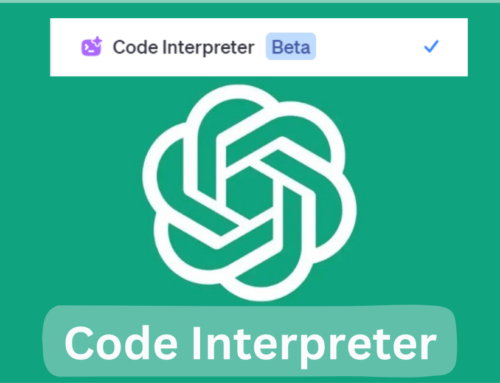In this article, we will explore the six building blocks of a good prompt and the order of importance for each component. The six components include task, context, exemplars, persona, format, and tone. By understanding these components and their hierarchy, you can consistently generate high-quality outputs.
We will also discuss how including relevant examples within the prompt can drastically improve the quality of the output. Additionally, we will provide tips on how to choose the right persona and tone for your prompt to achieve the desired outcome.
Key Takeaways
- Understanding the six building blocks of a good prompt and their order of importance can help you consistently generate high-quality outputs.
- Including relevant examples within the prompt can drastically improve the quality of the output.
- Choosing the right persona and tone for your prompt can help you achieve the desired outcome.
Importance of Prompting
Prompting is a critical skill to learn, especially when using Chachi BT and Google bard. It involves providing just enough relevant information to generate high-quality outputs. The six building blocks that make up a good prompt are task, context, exemplars, persona, format, and tone.
It is mandatory to have a task in your prompt, and it should be clearly articulated with an action verb. Context is the trickiest component to get right, but it is essential to include relevant information such as the user’s background, what success looks like, and the environment they are in.
Exemplars are not necessary for every prompt, but including a relevant example or framework greatly improves the quality of the output. Persona involves thinking of someone you wish you had instant access to with the task you’re facing. The format component involves visualizing how exactly you want the end result to look like.
Finally, tone is easy to understand and involves using a casual or formal tone of voice, showing enthusiasm, sounding pessimistic, or any other feeling you want to convey. By following these six building blocks, you can consistently generate high-quality outputs with Chachi BT and Google bard.
Six Building Blocks of a Good Prompt
To consistently generate high-quality outputs, it is important to include the six building blocks in your prompt. These building blocks are task, context, exemplars, persona, format, and tone. It is critical to follow the order of importance, starting with the task followed by the context. Including relevant exemplars is also important, while persona, format, and tone are nice to have.
When writing the task, start the sentence with an action verb and clearly articulate the end goal. Context is the trickiest component to get right, but asking yourself three questions can be helpful in coming up with just enough information to get a good result. Exemplars, or examples, drastically improve the quality of the output, and it’s not necessary to include them in every prompt.
Persona is basically who you want Chachi PT and Bard to be, and it’s important to think of someone you wish you had instant access to with the task you’re facing. Format can be anything from emails to code blocks, but it’s important to visualize how exactly you want the end result to look like. Lastly, tone is easy to understand, and it’s important to specify the feeling you’re going for.
In summary, to write a good prompt, follow these six building blocks in the order of importance: task, context, exemplars, persona, format, and tone. Remember to include just enough relevant information and prioritize the muscle groups that make you look good on Instagram.
Hierarchy of Prompt Components
The six building blocks that make up a good prompt are task, context, exemplars, persona, format, and tone. The task component is the most important and should always start with an action verb and clearly articulate the end goal. The context component should include just enough information to get a good result from Chachi BT and Google Bard, answering questions such as the user’s background, what success looks like, and the environment they are in. The exemplars component involves including examples or frameworks within the prompt to improve the quality of the output. The persona component involves thinking of someone you wish you had instant access to with the task you’re facing. The format component involves visualizing how exactly you want the end result to look like, and the tone component involves specifying the feeling you’re going for, such as confident, knowledgeable, neutral, or clear. While it’s important to include all six components when possible, it’s not necessary for every prompt to have a good output. Prioritizing the task, context, and exemplars components will generally lead to high-quality outputs.
Task Component
The task component is the most important building block of a good prompt. It should always start with an action verb and clearly articulate the end goal. The task should be prioritized over the context because it is mandatory to have a task in your prompt. It is critical to include relevant context and exemplars, and nice to have persona, format, and tone. When writing a prompt, go down a mental checklist of these six components to include just enough relevant information. However, not all six components are necessary for every prompt to have a good output. For example, a simple task like generating a three-month training program or a complex three-step task like analyzing hundreds of user feedback and categorizing the feedback based on the team responsible for following up.
Context Component
To craft a good prompt, it is essential to understand the six building blocks that make up a good prompt: task, context, exemplars, persona, format, and tone. These components must be included in the right order of importance to generate high-quality outputs. The task is the most important component, and it should always start with an action verb that clearly articulates the end goal. The context is the trickiest component to get right, and it is crucial to include just enough relevant information to get a good result from Chachi BT and Google bard. Exemplars are not necessary for every prompt, but they greatly improve the quality of the output. The persona component is who you want Chachi PT and Bard to be, and it helps to think of someone you wish you had instant access to with the task you’re facing. The format component is how you want the end result to look like, and it helps to visualize it. Finally, the tone component is the tone of voice you want to use, and it helps to tell Chachi BT the feeling you’re going for. By following these six building blocks, you can consistently generate high-quality outputs.
Exemplars Component
Including relevant examples or frameworks within your prompt greatly improves the quality of the output. It is not necessary for every prompt, but it is recommended to include at least one relevant example or framework. For instance, a simple example for rewriting a resume bullet point is to use the structure “I accomplished X by the measure Y that resulted in Z.” Another example is to use the STAR answer framework for interview preparation. If you want to specify a persona for Chachi BT and Google Bard, think of someone with experience in the task you are facing. You can also use famous fictional characters as personas. The format of the output can be specified by visualizing how you want the end result to look like. Common formats include paragraphs in markdown, bullet points, and code blocks. Finally, the tone of voice can be specified by telling Chachi BT the feeling you are going for, such as confident, knowledgeable, neutral, or clear.
Persona Component
The Persona component of a prompt is all about identifying who you want Chachi PT and Bard to be. This means thinking of someone who has the expertise and experience to help you with the task at hand. It could be a physical therapist for workout-related prompts, a recruiter or hiring manager for job-related prompts, or a senior product marketing manager for creative briefs. You can even name specific individuals, but it’s important to make sure they are well-known enough to generate relevant output. Fictional characters can also be used as personas.
Format Component
When crafting a prompt, it’s important to consider the six building blocks that make up a good prompt: task, context, exemplars, persona, format, and tone. The order of importance for these components is task, context, exemplars, persona, format, and tone.
When writing the task component, always start the sentence with an action verb and clearly articulate the end goal. For example, “generate a three month training program.”
Context is the trickiest component to get right, but it’s important to include relevant information to constrain the endless possibilities. Asking questions like “what’s the user’s background?” and “what environment are they in?” can help.
Exemplars, or examples, drastically improve the quality of the output. Providing a relevant example or framework will greatly improve the output.
Persona is who you want the AI to be. Think of someone you wish you had instant access to with the task you’re facing.
Format is how you want the end result to look like. Visualize it and choose the appropriate format, such as paragraphs and markdown, bullet points, or code blocks.
Tone is the voice or feeling you want the output to convey. Specify the feeling you’re going for, such as confident or friendly.
Remember, not every prompt needs all six components, but including just enough relevant information from each component will consistently generate high quality outputs.
Tone Component
The tone component of a prompt refers to the desired tone of voice for the output. This can be casual, formal, enthusiastic, pessimistic, or any other desired tone. When creating a prompt, it is important to be clear about the tone that is desired. One pro tip is to tell Chachi BT the feeling that is desired, such as “confident” or “knowledgeable.” This will help Chachi BT generate a tone that matches the desired output.
Comprehensive Prompt Example
To master prompting on Chachi BT and Google bard, it is important to understand the six building blocks that make up a good prompt: task, context, exemplars, persona, format, and tone. These components should be included in your prompt in a specific order of importance, with the task being the most important. The context is also crucial, as it provides relevant information to Chachi BT and Bard to generate high-quality outputs. Exemplars, or examples, are also important, as they greatly improve the quality of the output. The persona component refers to who you want Chachi PT and Bard to be, and the format component involves visualizing how you want your end result to look like. Finally, the tone component involves using a specific tone of voice to convey the desired emotion or feeling.
When writing a prompt, it is essential to start the task sentence with an action verb and clearly articulate the end goal. The context should provide just enough information to constrain the endless possibilities of the output. Exemplars can include frameworks or examples, which greatly improve the quality of the output. The persona component involves thinking of someone you wish you had instant access to with the task you’re facing. The format component involves visualizing how you want your end result to look like, and the tone component involves using a specific tone of voice to convey the desired emotion or feeling.
As an example, a comprehensive prompt can be: “A senior product marketing manager at Apple has just unveiled the latest Apple product in col. The prompt should be written in a confident, knowledgeable, neutral, and clear tone of voice.”
Comparison of Prompt Outputs
Prompt outputs can vary widely based on the quality of the prompt provided. By following the six building blocks of a good prompt – task, context, exemplars, persona, format, and tone – one can consistently generate high quality outputs.
It is important to note that not all six components are necessary for every prompt to have a good output. However, including relevant exemplars or frameworks greatly improves the quality of the output.
The following table summarizes the importance of each building block in generating a good prompt output:
| Building Block | Importance |
|---|---|
| Task | Mandatory |
| Context | Important |
| Exemplars | Highly recommended |
| Persona | Recommended |
| Format | Recommended |
| Tone | Recommended |
By prioritizing the task and including just enough relevant information for context, one can effectively constrain the endless possibilities of prompt outputs. Additionally, visualizing the desired end result and specifying the desired tone can greatly improve the quality of the output.
In summary, following the six building blocks of a good prompt and prioritizing the task and relevant context can consistently generate high quality prompt outputs.
Conclusion
In summary, a good prompt consists of six building blocks: task, context, exemplars, persona, format, and tone. It’s important to prioritize the task and include relevant context and exemplars, while persona, format, and tone can enhance the output. Including examples within the prompt can greatly improve the quality of the output. Visualizing the desired format and specifying the tone can also help. Remember to use action verbs in the task sentence and include just enough information to constrain the endless possibilities. By following this formula, you can consistently generate high-quality outputs on Chachi BT and Google Bard.






Leave A Comment